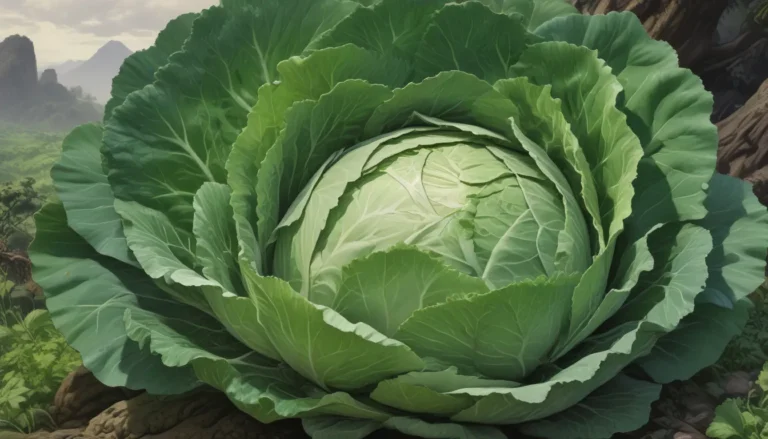Understanding and Preventing Black Smut Fungus Infections

If you’ve ever encountered black smut fungus in your garden, you know how devastating it can be for your plants. These parasites, known as Ustilaginomycetes, are true smuts that infect a variety of plant species, causing stunted growth, discoloration, and damaged fruit. In this article, we aim to provide you with an in-depth understanding of black smut fungus, its effects on different plants, and practical tips for avoiding infections in your home garden.
What You’ll Discover
- Host-Specific Species
- A Closer Look at White Smut Fungi
- Ideal Conditions for Fungal Growth
- Preventative Measures to Keep Your Garden Healthy
Let’s delve into this challenging disease and explore how you can protect your plants from black smut infections.
Host-Specific Species
Black smut fungus comes in various forms, each targeting specific plant species. Some varieties infect entire plants systemically, while others cause localized damage to specific plant parts. Understanding the nature of the infection can help you tailor your prevention strategies accordingly.
Examples of Host-Specific Species:
- Anemone Smut: Urocystis anemones
- Anther Smut: Microbotryum violaceum
- Loose Smut of Barley: Ustilago nuda
- Common Smut of Corn: Ustilago maydis
- Fig Smut: Aspergillus carbonarius, A. japonicus, A. niger
- Onion Smut: Urocystis cepulae, U. magica, U. colchici
- Rice Kernel Smut: Tilletia barclayana
- Turfgrass Smuts: Various Urocystis and Ustilago species
- Loose Smut of Wheat: Ustilago tritici
- Flag Smut of Wheat: Urocystis tritici
- Stinking Smut of Wheat: Tilletia tritici, T. laevis
Each of these species poses specific risks to different plants, and proper identification is crucial for effective prevention and management.
A Closer Look at White Smut Fungi
In addition to black smut fungi, there are also white smut species belonging to the Entyloma genus that can affect garden ornamentals. These infections typically start in the foliar tissue, leading to discoloration and tissue death.
Examples of White Smut Fungi:
- Dahlia Smut: Entyloma dahlia
- Calendula Smut: Entyloma calendula
- Sunflower Smut: Entyloma helianthi
While white smut fungi are generally manageable, it’s essential to monitor your plants for early signs of infection and take appropriate preventive measures.
Ideal Conditions for Fungal Growth
Understanding what triggers fungal infections is crucial for preventing outbreaks in your garden. Several factors can stimulate fungal germination and spore dispersal, including:
- Injured Tissue
- Nitrogen-Rich Environments
- Overcrowding
- Poor Sanitation
- Temperature-Moisture Connection
By addressing these conditions and creating unfavorable environments for fungal growth, you can significantly reduce the risk of black smut fungus infections in your garden.
Preventative Measures to Keep Your Garden Healthy
To avoid black smut fungus infections and protect your plants, consider implementing the following preventive measures:
- Adjust Planting Times: Tailor your planting schedule to avoid peak fungal activity periods.
- Avoid Nitrogen-Heavy Fertilizers: Opt for balanced fertilizers to discourage fungal growth.
- Buy Disease-Resistant Plants and Seeds: Choose high-quality, disease-resistant varieties to minimize infection risks.
- Don’t Overcrowd: Provide plants with ample space to promote airflow and reduce humidity.
- Remove Weeds and Debris: Regularly remove debris and weeds to prevent fungal spores from spreading.
- Rotate Growing Areas: Rotate crops to prevent the buildup of fungal pathogens in the soil.
- Sanitize Equipment: Disinfect gardening tools to prevent the transmission of fungal spores.
- Water with Care: Water plants at the soil level and avoid overwatering to minimize fungal growth.
By following these tips and maintaining a healthy garden environment, you can effectively prevent black smut fungus infections and keep your plants thriving.
In Conclusion
Black smut fungus can present significant challenges for gardeners, but with the right knowledge and preventive measures, you can protect your plants from infection. By understanding the different species of smut fungi, recognizing ideal conditions for fungal growth, and implementing proper prevention strategies, you can maintain a healthy garden that thrives free from fungal diseases.
If you have encountered black smut fungus in your garden, share your experiences and tips in the comments section below. Your insights and experiences can help fellow gardeners tackle this common fungal disease effectively.
For more information on plant fungal diseases and prevention strategies, check out our recommended reads on powdery mildew, gray mold, and sooty mold control. Remember, prevention is key to a healthy and vibrant garden!
“Prevention is always better than cure when it comes to protecting your plants from black smut fungus infections. By understanding the underlying causes and implementing proactive measures, you can safeguard your garden and enjoy a thriving green space all season long.”





